Nuclear Nightmares in Film and Preventing Eventual Armageddon
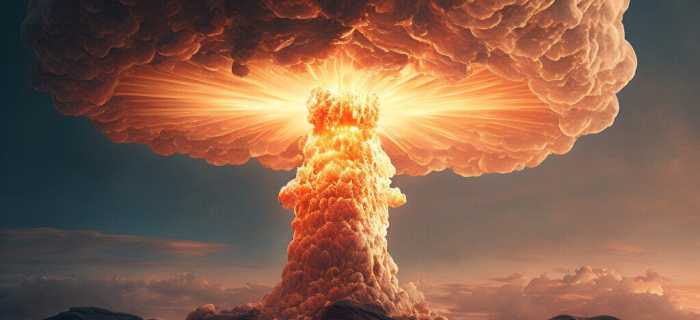
In 1984, Threads was released and viewed by audiences across the United States and Britain. The film follows the events of a nuclear war folding out over Britain. It starts with a young couple finding their way through a sudden pregnancy and turns to expose to the audience, as realistically as possible, what would happen in a nuclear war to members of the everyday public. A lot of research was done to make the film as accurate as possible.
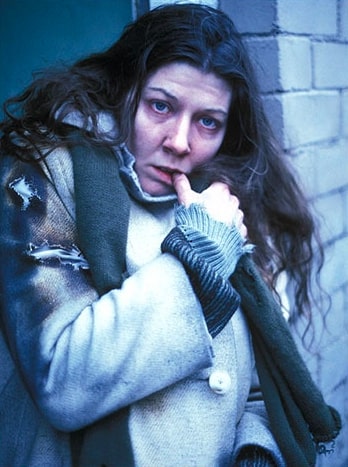
The film is horrific. Audiences who watched it apparently shared a gloomy sense of horror at what they had seen having watched the film. The events of the film stuck in the minds of whoever watched the film, creating a shared post-traumatic feel of fright in how it depicts things going from bad to worse in what would likely really result in a nuclear war. After a similar movie The Day After aired in the United States, public debate was stirred meaning that Secretary of State George Shultz had to reassure the public that nuclear was not acceptable.
Normally, audiences who watch horror play out on screen have an escape to calm their senses when the action finishes. What they are watching is not real and could not happen in real life. But movies about the impacts of nuclear and atomic war bring something real to their audience, particularly when they portray what happens using true historical events. It is easily forgotten that collectively there are enough nuclear weapons across the globe to destroy it more than once over. What have films about nuclear weapons taught us about what would happen in a nuclear war?
Moments Before a Nuclear Attack
On the 13th of January 2018, the residents of Hawaii all received an alert that a ballistic missile was making its way to their location. “Seek Immediate Shelter. This is not a drill” the message read, creating a panic that led the residents to scrabble and seek out shelter in the limited time they had before the nuclear attack took place. People were recorded screaming and running in the streets as they came to terms with the fact that they were all about to die. Parents inserted their children into manholes.
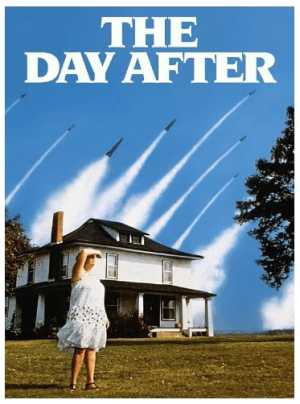
Scenes like these have been portrayed in cinema before. In 1983, the movie The Day After portrays the occupants of Kansas City in a similar state of panic. In the movie ballistic missiles are suddenly fired leaving characters aware of the impending armageddon. While some characters are left wondering whether the United States or Russia fired first, the reality begins to bear down on the characters that an attack is about to take place. One of the families, who happens to live right next to a nuclear launch facility, are first to realize what is about to happen to them.
A husband is depicted in the movie dragging his wife down the basement with her screaming out in agony knowing that things will never be the same again. A number of characters are depicted driving their cars only to have them grind to a halt the moment the nuclear attack takes place. In Threads, distant nuclear explosions catch characters off guard. The romeo of the movie is seen running in the street only to not be seen again in the movie after the bombs go off. Characters are seen one scene to be gone the next after the nuclear attack. Just as in The Day After, people are seen running in the streets. One women is shown in Threads to be wetting herself at the sight of the nuclear explosion off in the distance.

Scenes of utter panic like this, don’t seem realistic when shown to audiences in The Day After and Threads, until they are compared with what happened in 2018 in Hawaii. It becomes very easy for strong words to lead to a sense of willingness to see the war continue in order to win out compared to an enemy country. Conflicts like the Vietnam War have been extended by words that did not really make apparent what was playing out. Scenes of nuclear attack like those in The Day After and Threads force politicians to be honest about what the public is being asked to sacrifice. Trump had to reflect on the relationship between himself and Kim Jung Un after the incident in 2018 in Hawaii – that turned out to be a false alarm. Leaders in the 1980s had to also deal with a public with a better understanding of what would actually happen in a nuclear war.
The Use of the First Atomic Bombs
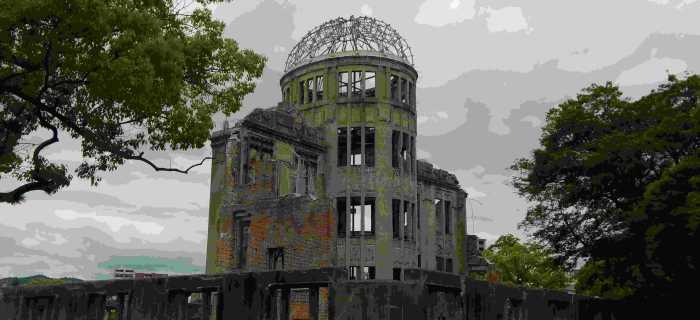
The events of the bombing of Hiroshima and Nagasaki have been the focus point of a number of recent movies. The Japanese film This Corner of the World follows a young woman living in Japan who has to marry and move out of Hiroshima to the neighbouring city of Kure. The main character is living in Japan’s war period, and as the movie progresses the war becomes less distant. Scenes show American war planes attacking the Japanese navy ships in the harbour of Kure. Eventually, Hiroshima is attacked and the main character is left wondering what has happened to her family in Hiroshima. While the film is not intended to be patriotic, it does show Japanese life at the time in a number of different ways.
When the neighbouring city of Hiroshima gets bombed, we see characters react in confusion not understanding fully what has just occurred. The flash and arrival of doors caught in the blast and blown all the way to Kure make it apparent that something terrible has happened. Radio announcements follow including the formal message from the emperor that Japan cannot go on against such attacks and “endure the unendurable”. The main character reacts in frustration, having lost her arm in a bombing and having her youth stripped away as the war takes hold, she finds it difficult to come to terms with what is going on around her in the same way we see in The Day After.
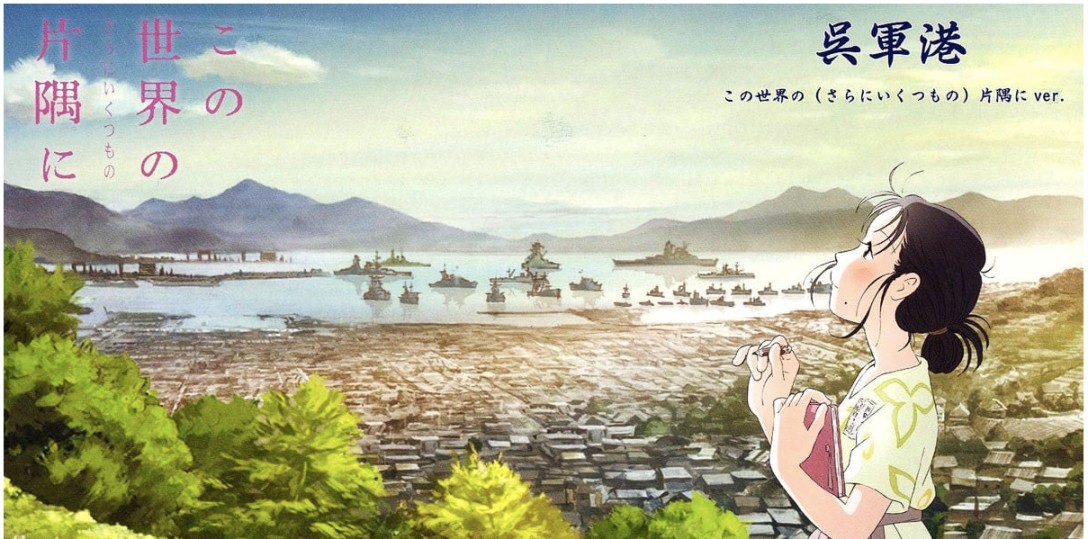
The films Oppenheimer and This Corner of the World are important pieces of the same historical story. Oppenheimer does not portray what happens in Japan or spend a lot of time trying to understand it. Instead, parts of the film shows a crowd celebrating only for Oppenheimer to see the audience with torn skin and suffering from the effects of radiation revealing how naive the American public really is about atomic weapons and what they do when used. On the one stance, the use of the atomic bombs on Japan helped prevent the need for an invasion of mainland Japan. On the other stance, the impact of these weapons was not fully understood. The bombs were indiscriminate in who they killed as This Corner of the World shows.
Oppenheimer spent a lot of time in the film trying to make apparent to decision-makers like President Truman that the proliferation of atomic weapons posed a grave threat. What we are left with in the film is a strong contrast between Oppenheimer and President Truman. Oppenheimer feels guilty because he understands what he has done. President Truman, who ends up labelling Oppenheimer a “crybaby”, makes clear to Oppenheimer that he was the one who dropped the bomb not him. Truman comes off, reflecting on the real effects of a nuclear war, as very naive as at the end of a nuclear war it will not matter who dropped the bomb. However, we don’t really get this feeling from the movie as the effects of atomic weapons are not shown to the audience in the attack on Japan.
When The Clock Is Ticking
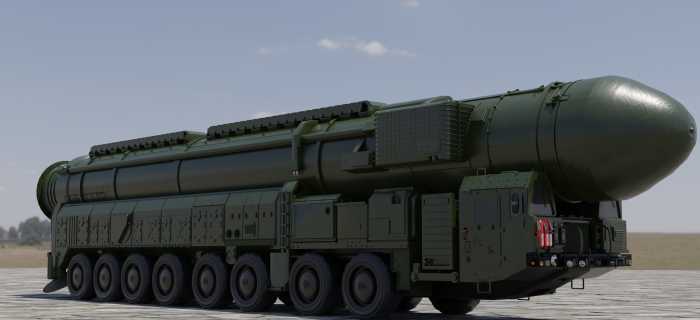
The movie Thirteen Days is focused not on a nuclear strike but on the possibility of one as the United States navigates the missile crisis created by Russia placing nuclear missiles into Cuba. The movie starts with a lot of discussion of strikes on sites in Cuba and invasion, only for the conversation to shift towards finding a solution that does not mean escalation into a conflict that would eventually mean both sides use their nuclear weapons. While a nuclear strike does not take place during the film, and did not take place historically during the crisis, it does present a reflection point on how the world finds its way towards using nuclear weapons.
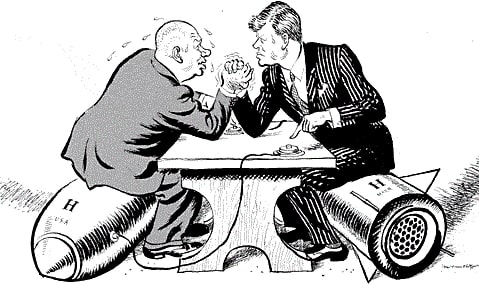
It is interesting comparing the events of this film with what we hear in the background in the lead up to nuclear strikes in Threads and The Day After. Before warheads are launched, we hear of nuclear weapons being used against Russian soldiers in Europe in The Day After, and we hear news reports of nuclear weapons being used against Iran in Threads by NATO. The contrast, between these depictions and Thirteen Days is that the characters in the story are family men who don’t want to see their country go to war unnecessarily. Thirteen Days spends a lot of time painting the military industrial complex as the enemies of the story as they lean into the prospect of war without understanding what they are doing. Kennedy wants to avoid a conflict that will escalate to nuclear war.
As the conflict in Ukraine continues to unfold, Russia faces a number of challenges against Ukrainian forces that make their situation dire. This has led some Russian officials to talk about the use of nuclear weapons and hope doing so will be a detariant to those assisting Ukraine. In late July 2023 Medvedev, the former Russian Prime Minister, suggested that Russia would be justified in using nuclear weapons to defend itself against Ukraine taking back territory which Russia had taken from Ukraine. While comments like this were put to one side, they do sound similar to events that were part of an all out nuclear war escalation in Threads and The Day After.
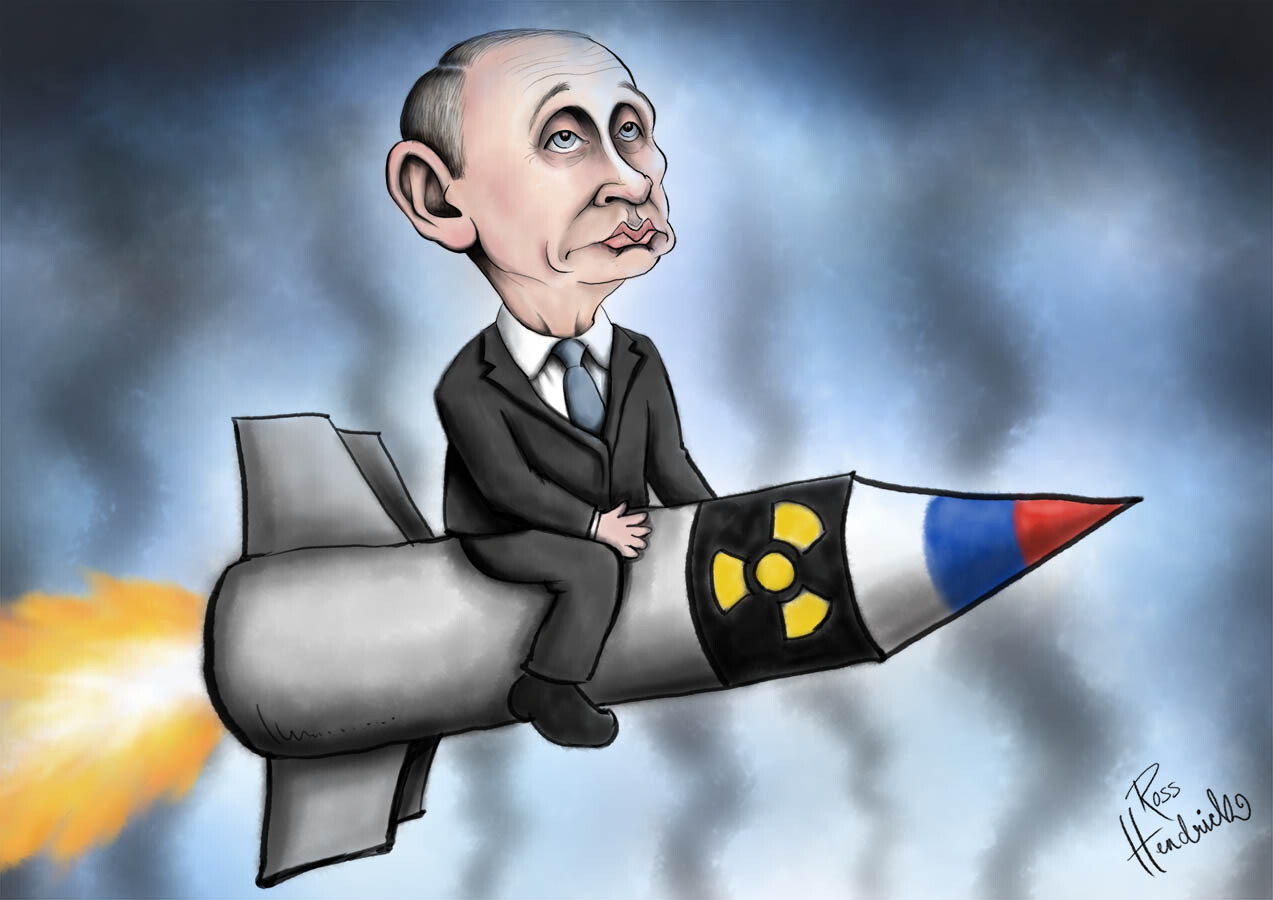
Thirteen Days holds a number of lessons that are useful for leaders who want to prevent a nuclear war but are having to deal with a crisis. One of the big lessons is keeping your military leaders honest and checking in with what is really going on. Flyovers and warning shots seem like passive steps but the movie asks whether the other side will know the difference between a flyover and warning shots and an all out attack. The other lesson from the movie is thinking about your military actions as a conversation with the enemy. As both countries lacked the ability to communicate with each other they had to apply this kind of thinking. Ultimately doing so prevented escalation to a conflict. While Thirteen Days does not feature a war it does feature a good example of what to do rather than what not to do which is portrayed in The Day After and Threads.
The Nightmare Begins After Midnight
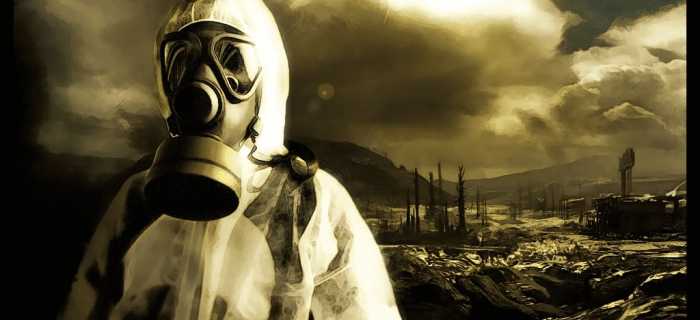
One of the most interesting depictions of the effects of nuclear weapons in film starts focused on a small town. Three children ride their bikes up to the local nuclear power station to witness the plant blow up in front of them. The boys quickly get back on their bikes, with one left looking in horror not aware of the radiation that he is being exposed to and how things are about to change for this character. Chernobyl: Abyss released on Netflix in 2021 isn’t about a nuclear war but a nuclear disaster that occured in Ukraine in 1986. One of the reasons it is so unique is how it focuses on a child and how radiation poisoning would impact children in a nuclear attack.
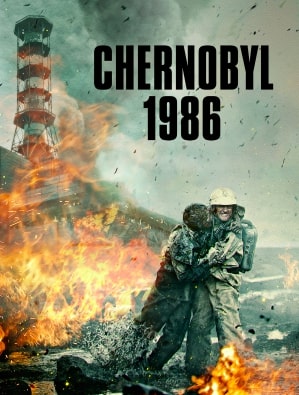
The main character of the movie, a firefighter, ends up getting involved in cleaning up the mess at Chernobyl having been told that it will give the young boy, the son of his love interest, a chance at survival. We see the boy vomiting early on in the movie, and his health deteriorate through the movie making the main characters efforts more and more dramatic. But films like this don’t go far enough in giving a modern audience an understanding of what happens to people in a nuclear war.
While what would happen after a nuclear war occured is difficult to know, researchers do have some idea. The book Nuclear Choices for the Twenty-First Century: A Citizen’s Guide written by Richard Wolfson and Ferenc Dalnoki-Veress talks about how important it is early on to seek shelter. According to the book, staying inside for the first 48 hours after a nuclear blast is recommended as fallout levels decay by a factor of a 100 in this period. Severe burns are likely to occur and could very quickly overwhelm hospitals as was depicted in The Day After. Wolfson is a physicist and expert on this topic. Ferenc Dalnoki-Veress is a scientist at the Centre for Nonproliferation Studies at Middlebury College.
In film, pieces of what would happen seem best depicted between different films rather than in one place. The Day After shows hair loss amongst a number of characters who went outside for extended periods or got caught in the initial blasts. Scaring also appears on a number of characters, people are depicted with bleeding, and eye damage as a result of watching the blast. However, The Day After ends depicting one lady giving birth to suggest that there is hope for the future. Threads is a lot more blunt with the future, ending with a lady giving birth to a dead baby deformed because of the effects of nuclear radiation. Audiences have to realize that once a nuclear attack is done it is done, there is no going back to normal. It is the end of life as we know it for those involved.
World on the Brink of Armageddon
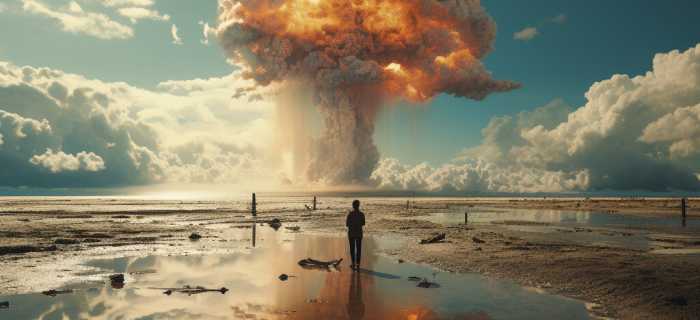
In 2013, Princeton University researchers looked into what would happen in the first few hours of a nuclear war given the current number of warheads and likely targets. The research, called ‘Plan A’, showed that within the first few hours of their scenario playing out 90 million people would likely be dead. An article published in Food Nature in August 2022 talks about how a nuclear winter would entail 5 billion people starve to death in the first few years. Growing concern about nuclear war has forced world leaders to ratify the SALT treaty that reduced the number of nuclear weapons in both Russia and the United States. But at present both countries are upgrading their nuclear capabilities. Andrew Facini, a Senior Fellow at the Council of Strategic Risks, noted that chances of a nuclear conflict are increasing as the United States improves sea capabilities to launch nuclear missiles this year.
Movies like The Day After and Threads created conversations about nuclear conflict that led to a rethink about their use in the United States. Marsha Gordon, a professor at Carolina State University, pointed out in a recent article that “Perhaps some modernized version of The Day After could function as a wake-up call for those who have no real context for nuclear fear”. It clearly worked in doing so in the 1980s. But in the present period, nuclear war has been made less tangible by how filmmakers have not portrayed nuclear war in the same way that left audiences horrified when they watched The Day After or Threads. Maybe what the world needs at the moment is a movie that makes clear what would happen in a nuclear war and leads us to all reflect on nuclear nightmares once more.
What do you think? Leave a comment.











If you’re keen to watch something that shows examples of lethal power, capable of ending the world-as-we-know-it, try the BBC’s nature series Earth. Makes nuclear bombs look like the small beer they really are. The only real problem with nuclear armament is when us stupid apes lose control of them…
Studio Ghibli’s “Grave of the Fireflies” is one of the most harrowing films I’ve ever seen. Raymond Briggs’ less well known film “When the Wind Blows” is another excellent portrayal of post nuclear war. Both truly shocking.
Threads is horrifying.
I have not seen the new film Oppenheimer: but it will take a lot to beat the BBC drama series with sam waterson in the role – allowed as a series to build the story over 7 episodes. Hope one day it is shown again
Although a doc, I recommend Trinity and Beyond: The Atomic Bomb Movie. The footage is amazing in that one.
More recommendations: “In This Corner of the World” and “Barefoot Genji”.
No-one mentioned Katsuhiro Otomo’s “Akira”?
Well, technically it’s just “a new type of bomb ” that exploded..
A bit less realistic, if. You’re looking for a nuclear bomb going off, is Ben Affleck’s Jack Ryan effort, The Sum of all Fears.
FYI Threads can be watched, for free, on The Internet Archive.
Barefoot Gen, 1983 Japanese animation about the hiroshima bomb was introduced to me by my 11 year old last week. It is intense, harrowing, and on YouTube here. https://youtu.be/olFmklCCccE
We watched half of it together and had to take a break. It is autobiographical. Staggering.
When the Wind Blows.
Why this is not mentioned above is a peculiar oversight. For me it is seminal in highlighting the utter futility of Nuclear War and should be required watching for every citizen of the world.
Have you watched Fail Safe? It is a great movie and it really shows the madness of security provided by weapons capable of destroying life on the planet. Walter Matthau was particularly chilling as a Kissinger/Teller hybrid who embodies the pro-nuclear weapons philosophy. It was overshadowed by Dr Stranglove, but Fail Safe’s straight face portrays the lunacy of nuclear weapons more effectively than even Kubrick’s fantastic treatment of the topic.
Yeah. Sidney Lumet directed that when he was starting out. Not Stanley Kubrick but still a very good director.
Saw Fail Safe in a seedy London cinema back in the 60s, and at the end of the film everyone in the cinema stood up and clapped, something I’ve never seen happen before or since.
There are many movies, documentaries about Hiroshima and among them I think the 1995 TV movie “Hiroshima” stands out, because it presents both the American *and* Japanese course of events as things unfold. It is co-directed by Koreyoshi Kurahara for the Japanese side, and Roger Spottiswoode for the presentation of the US side. Crucially, the Japanese side is shown from a Japanese point of view, a perspective rare in western movies.
The biggest moral stain is that from the moment when the German Nazis got defeated, there was no ethical justification to pursue the Manhattan Project, and the movie shows very well how the Physicist Leo Szilard tried (and failed) to convince the then vice-president James Byrnes to stop the project. Byrnes justifies his position by not wasting taxpayer’s money and slowly but surely,Japan will emerge as the target, not least because of the absolute brutality of the Pacific War, and the US seeing themselves still embroiled in War in East Asia while it has pretty much ended everywhere else.
On the Beach (the original 1958 version) and Testament (1983) should definitely be mentioned. They both have the ability to shake me up every time I watch either one of them.
The Day the Earth Caught Fire is also brilliant, Russia and US simultaneously detonate two large bombs which send the Eart hurtling towards the sun. The BFI bluray has some great extras about UK civil defence. Also the Boulting brothers Seven Days to Noon should be forgotten.
Not be forgotten.
Just watched ‘Countdown to Looking Glass’. We’ll all be watching events on broadcast TV it seems. Scarily prescient but as it was made in 1984 it depicts pre Fox news reporting, journalists just trying to understand and present the facts as best they can. I doubt we’d be getting that now.
Studio Ghibli’s Grave of the Fireflies. 100% on Rotten Tomatoes. Probably the best film on the subject.
Let’s not forget Stanley Kramer’s On the Beach, which depicts doomed people in Australia waiting for the inevitable fallout to reach them in the wake of global nuclear war. A different take on the subject, with an excellent cast: Gregory Peck, Ava Gardner, Anthony Perkins
Don’t forget Fred Astaire. He was in it too.
On the Beach [MGM: 1959]. The most devastating atom bomb movie with no mushroom cloud. Unique in that it takes place after an atomic war, but before things go full apocalyptic. Never shows up on TV. Very, very rarely on TCM. Never shows up on pay-per-view. Currently available on DVD in both GB and US. Timely, in that it now has certain parallels with the coming climate apocalypse.
Yeah. Before ICBM’s targets had to be hit with bombers and I guess Australia was just too far away from the Soviet Union to get directly hit. On the Beach certainly is a nuclear war movie but just as much it’s a movie about people preparing to die left in a wrecked world. Basically the cast waiting the inevitable nuclear fallout are left to just turn the lights out. The novel by Nevil Shute is worth a read too.
Nothing will ever top Threads.
For the real thing try Crossroads a film by Bruce Conner using the actual test footage set to a very haunting score by Patrick Gleson & Terry Riley.
‘Threads’ was, for me, the most harrowing portrayal of nuclear oblivion. Truly scary as it represented the build up to, and the after effects of, all out nuclear war on ordinary people.
Scariest movie I’ve ever seen.
Some good films on this list. But nothing really conveys the portent , the misery inflicted and the era defining historical impact of Nuclear War better than ‘Indiana Jones and the Kingdom of the Crystal Skull’.
I doubt it’s on a streamer, but if you like your bomb stories in anime form, Barefoot Gen makes Graveyard of the Fireflies look like Totoro.
Does “Thirteen Days”, an account of the Cuban missile crisis, count as worth watching when exploring this topic?
On the Beach (1959) is fantastic. Released in the darkest depths of the Cold War, you have no idea the emotional impact its depiction of loss and futility had on audiences.
And yet they still kept voting for war….
Watched To End All War: Oppenheimer and the Atomic Bomb on Sky Documentary, superb depiction of both the man and his extraordinary work. His defiant opposition to the far more destructive hydrogen bomb, developed by his colleague Edward Teller, is a positive footnote to his life and career.
No mention of 1950 Brit movie Seven Days Until Noon?! About a scientist whose moral qualms about the atomic bomb lead him to threaten the destruction of half of London, it won an Academy Award for writers Paul Dehn and James Bernard (Dehn was a well regarded poet & referred to by John LeCarre as an ‘assassin’ following his war service in the SOE).
In the news that Threads (the app) came out, how was it possible to forget Threads, the waking nightmare?
It is, it’s on The Internet Archive for free.
I’ll take any opportunity I have to recommend ‘Miracle Mile’ in which Anthony Edwards overhears a conversation about an imminent nuclear attack and frantically searches LA for his girlfriend to make it out in time. It plays out like ‘After Hours’ shot through with suffocating Cold War paranoia, its offbeat humour never deflating its genuine sense of pure terror.
I remember watching Threads when I was about 13 years old – man, that film really drove home the impact that a nuclear fallout would have on society
I remember my mate told me his English teacher showed his class Threads and I was so jealous. His description of the bomb and the seeming devolution of humans by the end seemed really enticing to my teenage apocalyptic mind.
About 10 years later I got a dodgy DVD copy and it freaked me out; not the apocalyptic part, but the reality of the UKs woeful preparations for any nuclear strike (no wonder the then government didn’t like it).
I managed to watch it again a couple of months ago in a cinema release and I found the countdown to the attack quite emotional. I don’t know what it was, maybe it was because I recognised most of the actors who were in it and felt for what was going to happen to the characters.
A good, well written article. I am aware that movies cannot possibly address the complexity of how a first nuclear-use situation might occur (in this post Second World War era). The use of a nuclear bomb in a Pakistan-Indian exchange is a possibility. In addition, in movies, nuclear missiles are always shown working the way they are intended. There is a term Circular Error Possibility (CEP) which addresses determining the accuracy of nuclear missiles. Generally speaking, this term addresses some of those missiles not functioning as intended but perhaps a missile shot from a silo in North Dakota hitting New York City. I have watched a number of these movies, and it is what I realize is missing that I wish was included in them.
Dear Elpis1988 and Stephanie M.,
The article is OK, but: Can you tell me what your degree of instruction is? (just in case)
I am a 62-year-old Nuclear Cardiologist, and I do like to know who I can trust when I read about what my interests are related to.
I am open to give you all (well, almost all) information regarding my professional background.
The whole point is to learn,(to begin with), isn’t it?
Thank you very much
Stay Safe and Healthy
A nuke goes off in The Sum Of All Fears.
Always liked this film because of the storyline but deep down I know its not a very good film because its Star makes a plank of wood look like Daniel Day-Lewis. The Nuke scene starts off good just before it happens with Morgan Freeman selling the moment to us but quickly morphs into sentimental rubbish.
The Japanese original of Godzilla is an interesting study on this theme. When Takashi Shimura arrives on screen for the first time is one of cinema’s great moments.
Let’s not forget the documentary Atomic Cafe.
Nolan’s “Oppenheimer” may have started a new sub-genre of “pre-apocalypse” movies. Before that, post-apocalyptic stories were a heck of a lot more popular; the hope that anyone who survives a nuclear war will be able to have some kind of fulfilling life, even if civilization is dead, is more attractive than fear, even fear of something realistic.
A good essay. Usually, scenarios that try to think through how a nuclear weapon might be used, focus on a limited use of nuclear weapons. Movies tend to create the impression of everything going off at once, which, I think, creates the wrong impression of what could possibly happen. The case of Nagasaki and Hiroshima, these came in the Second World War several years after the United States entered the war. The firing bombings of Tokyo which killed 80,000–100,000 people were five months before Hiroshima was bombed. If the atomic bomb had been developed earlier would the United States have used it in, say, 1942. War, as in the case of the Second World War, escalated as the war proceeded. Nagasaki and Hiroshima I think create a wrong historical illustration for how a future nuclear weapon might be used.